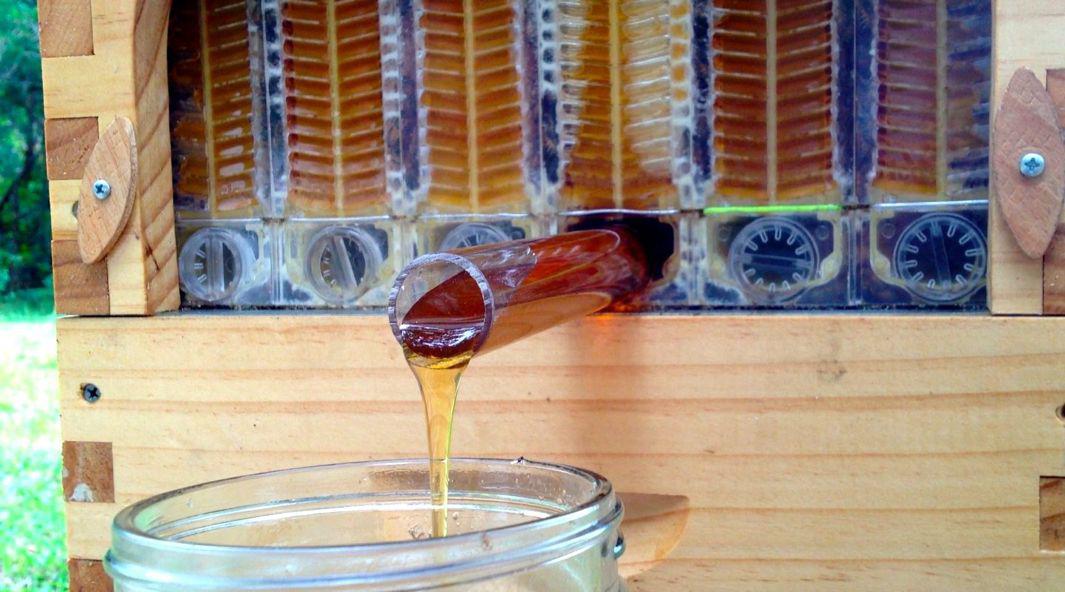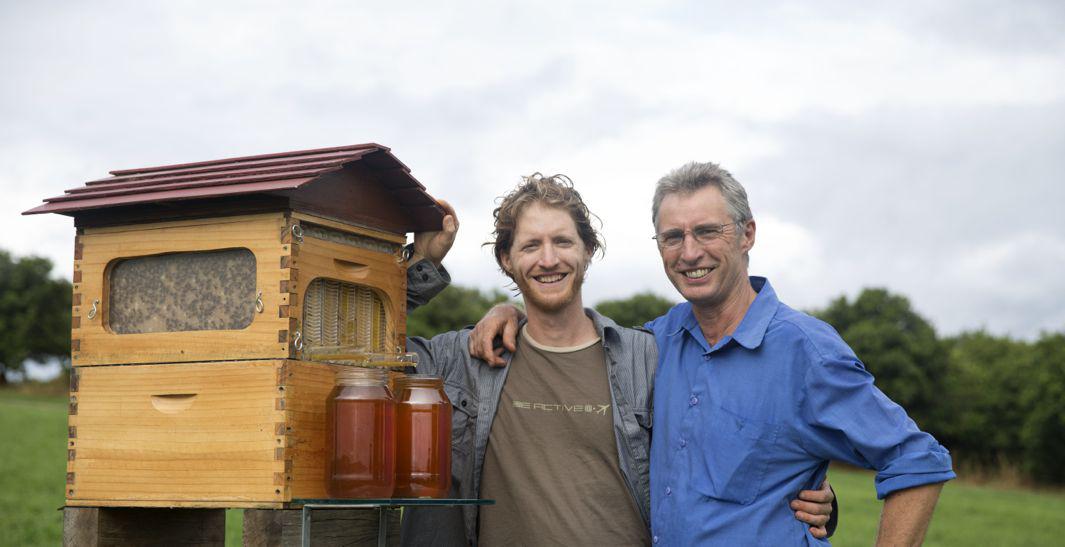Humans have been keeping bees for thousands of years. The process of extracting honey from hives has always been laborious, messy, time-consuming, and occasionally painful for beekeepers. It’s also a source of stress for bees that often switch to fight mode during a hive invasion.
But a father-and-son team of second- and third-generation beekeepers from Byron Bay, Australia, has spent the last decade redesigning the beehive to make extracting honey painless for both beekeepers and bees. Cedar Anderson, 34, and Stuart Anderson, 60, have developed an innovative beekeeping system that provides honey on tap with no need to crack open and pull apart the hives.
After field-testing their invention for three years on beekeepers in Australia and around the world, on Sunday the Andersons launched a Indiegogo crowdfunding campaign to raise $70,000 to fund production of Flow Hive. They exceeded their target in fewer than five minutes and have already raised more than $3.5 million and counting. (The campaign closes on April 5.)

Courtesy of Flow Hive
Harvesting honey typically requires beekeepers to gear up to protect themselves from stings, use smokers to sedate bees, crack the hives open, pull out honeycomb frames without squashing bees, move to processing facilities to uncap frames, insert them into extractors, filter out wax and dead bees, and clean up the mess before putting the frames back into the hives.
With Flow Hive, the Andersons write in a project description, just “turn a tap, sit back, and watch the honey pour out. It’s pure, unprocessed, untouched delicious honey directly from the hive. No mess, no fuss, no expensive processing equipment and without disturbing the bees.”
The Andersons say in a press release that their invention marks the biggest shift in honey collection in more than 150 years, with enormous implications for both amateur and commercial beekeeping. The Flow Hive, they say, eliminates almost all required human labor and opens the potential for remotely activated or automated honey collection.

Courtesy of Flow Hive
To create this seemingly seamless new method for harvesting honey, partially formed honeycomb cells are placed in transparent frames that fit into conventional beehives. The frames have clear ends that create viewing windows for beekeepers to monitor honey production, bee numbers, and pests.

Courtesy of Flow Hive
Once the bees have completed the comb with their wax and filled cells with honey, the beekeeper inserts a lever into the frame, turning it to vertically split open the cells. While bees sit largely undisturbed on the comb surface, pure unfiltered honey discreetly drains down a pipe at the back of the hive and flows out through a tap. Once the honey has finished flowing, the lever turns back, and the process starts all over again.
In addition to being well-funded budding entrepreneurs, the Andersons are beekeeping evangelists.
“Beekeepers and bees have a special symbiotic relationship that goes back thousands of years,” they write. “Without the bees we may not be able to sustain human life as we know it, and without the beekeepers we wouldn’t have enough bees. … We hope Flow Hive will encourage thousands more people to become passionate carers and advocates of bees and become more aware of the threats facing not only bees but the matrix of life.”
To see the Flow Hive in action, check out the video below, or visit the Flow Hive Indigogo campaign or website for more information.
